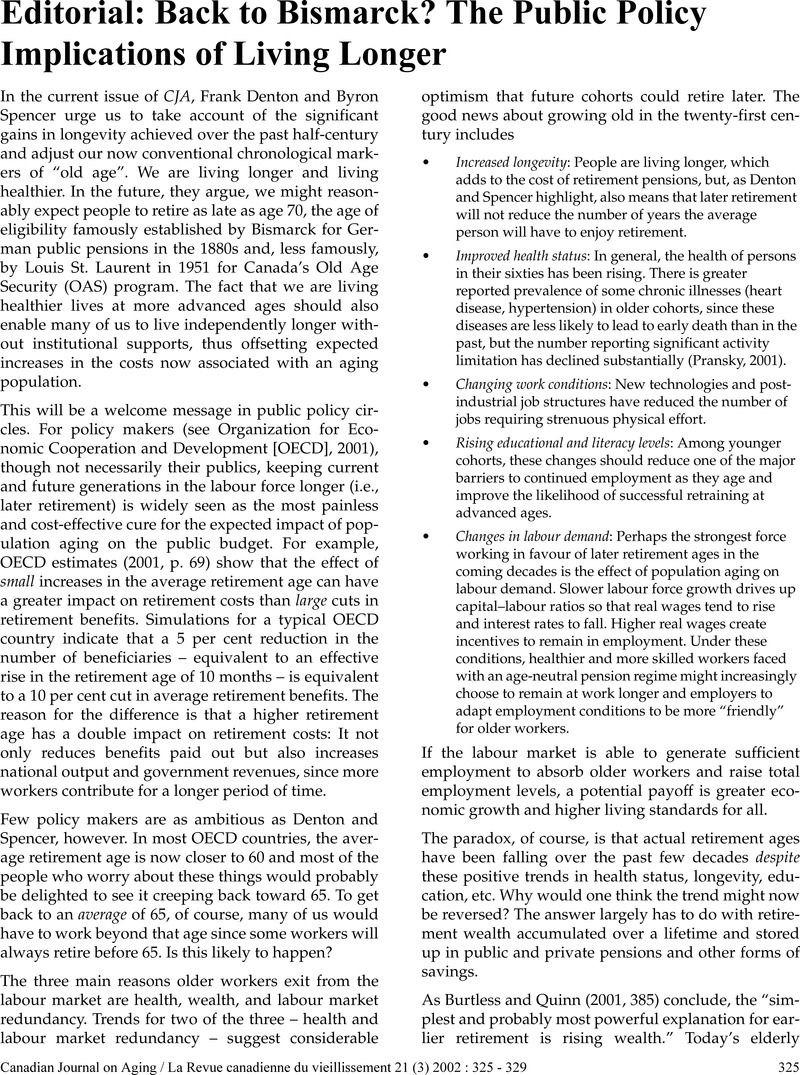Crossref Citations
This article has been cited by the following publications. This list is generated based on data provided by Crossref.
McDaniel, Susan A.
2003.
Politiques sociales, changements économiques et démographiques et vieillissement de la
population canadienne : leurs interactions.
Cahiers québécois de démographie,
Vol. 32,
Issue. 1,
p.
77.
Tampubolon, Gindo
and
Maharani, Asri
2017.
When Did Old Age Stop Being Depressing? Depression Trajectories of Older Americans and Britons 2002–2012.
The American Journal of Geriatric Psychiatry,
Vol. 25,
Issue. 11,
p.
1187.



